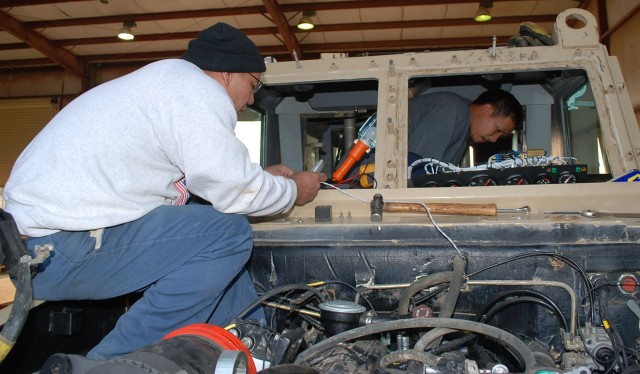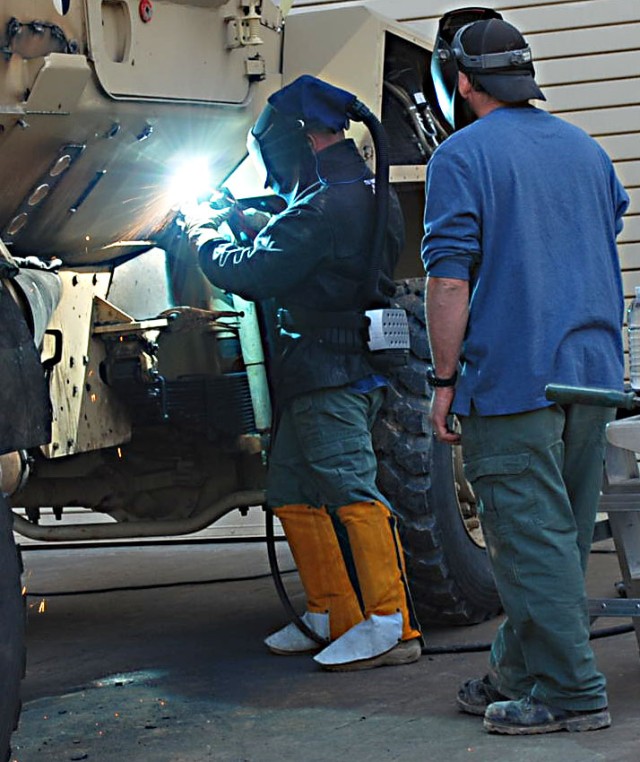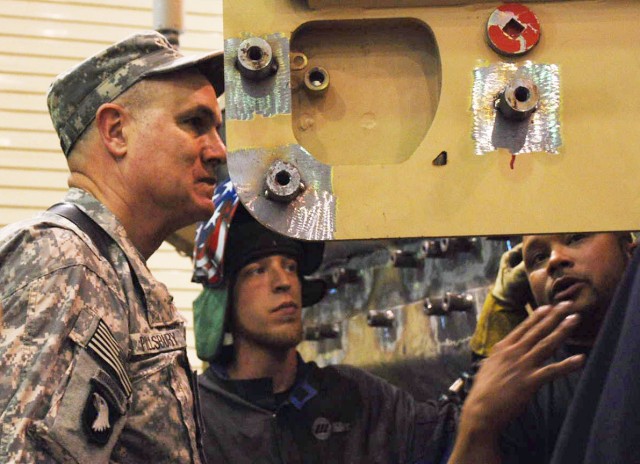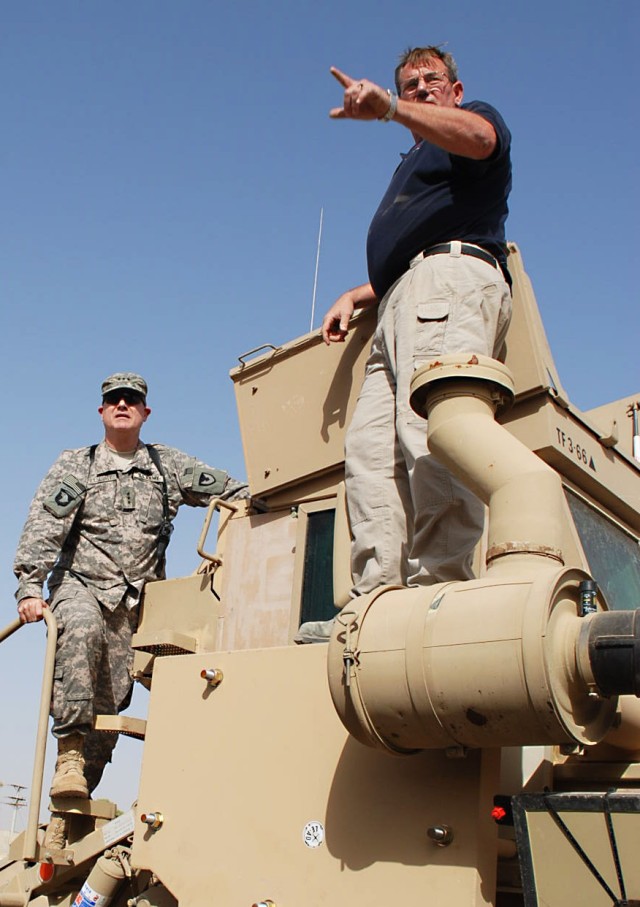JOINT BASE BALAD, Iraq - Route clearance vehicles, specialized members of the mine-resistant ambush-protected family of vehicles, are critical assets in keeping roads clear and convoys moving in support of Operation Iraqi Freedom.
Not only are the vehicles themselves unique, but the dedicated professionals who keep them on the road bring unique skills to bear for the Soldiers who depend on the hulking vehicles every day.
Part of the 402nd Army Field Support Brigade arsenal of support services, contractors operating under Product Manager Assured Mobility Systems provide complete contract logistics support, said Charles Carter, project manager forward representative for BRTRC.
"CLS manages and supports the vehicles from the time a truck is accepted into the inventory to the time it is demilitarized," Carter said. "AMS can provide all levels of maintenance from organizational to depot [level]."
That means the range of support spans everything from changing light bulbs to replacing the hull in some cases, Carter said. The significance is that vehicles can be repaired where they're needed most instead of being returned to the U.S. for depot-level repair.
"This is the only contract I know of that can do depot-level repair this far forward," said Jim Hobel, Mantech Theater Lead North, located at Joint Base Balad.
Route clearance vehicle work is performed at both fixed and embedded sites, supplied by two main warehouses maintaining approximately 10,000 lines of repair parts.
The warehouses stock everything from common keys to specialty fittings. Some of the complicated wiring harnesses contain hundreds of wires, Hobel said.
Fixed sites have complete maintenance facilities and repair parts pre-positioned, based on vehicle density. Also, several embedded sites support specific units. The embedded technicians bring parts and tools while host units provide life support and communications.
Hobel's team performs a full technical inspection whenever a vehicle comes into the shop and fixes everything according to unit requirements. Every vehicle the teams work on is must pass inspection by Army Sustainment Command personnel from the 1st Battalion, 402nd Army Field Support Brigade.
"By contract, we have to turn the vehicle around in 15 days," Hobel said.
The teams put a great deal of effort into maintaining the vehicles. They are aware that the route clearance vehicles can mean the difference between life and death for Soldiers.
"We haven't lost a Soldier since I've been here," Hobel said.








Social Sharing